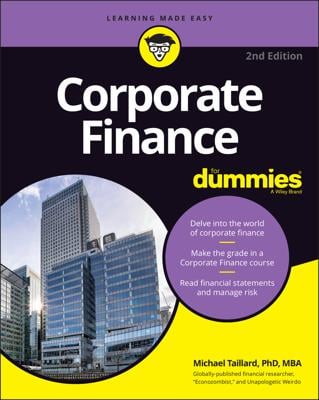In order to understand where the profit goes in a corporation, it helps to look at specific examples. The partners or shareowners of a business are entitled to a share of the business’s profit — but they may not get as big a piece of the sales revenue pie as you’d expect.
Following are some business examples to help put this into perspective:
Suppose that a private business earned $1.32 million net income for the year just ended and has issued 400,000 capital stock shares. Divide net income by the number of shares, and you come up with earnings per share of $3.30.
Assume that the business paid $400,000 cash dividends during the year, or $1.00 per share. The retained earnings account thus increased $2.30 per share (earnings per share minus dividends per share).
Although stockholders don’t have the cash to show for it, their investment is better off by $2.30 per share, which shows up in the balance sheet as an increase in the retained earnings account. Shareholders can hope that the business will use the cash provided from profit to increase future profit, which should lead to higher cash dividends.
Now, suppose the business is a public company that is 1,000 times larger. It earned $1.32 billion on its 400 million capital stock shares and distributed $400 million in cash dividends.
You may think that the market value should increase $2.30 per share, because the business earned this much per share that it retained in the business and did not distribute to its shareholders.
Profit is an increase in the net assets of a business (assets less liabilities, which is also called net worth). The business is $2.30 per share “richer” at the end of the year than it was at the start of the year, due to the profit it earned and retained. Yet it’s entirely possible that the market price of stock shares actually decreased during the year.
Market prices are governed by psychological, political, and economic factors that go beyond the information in the financial reports of a business. Financial statements are only one of the information sources that stock investors use in making their buy-and-sell decisions.

